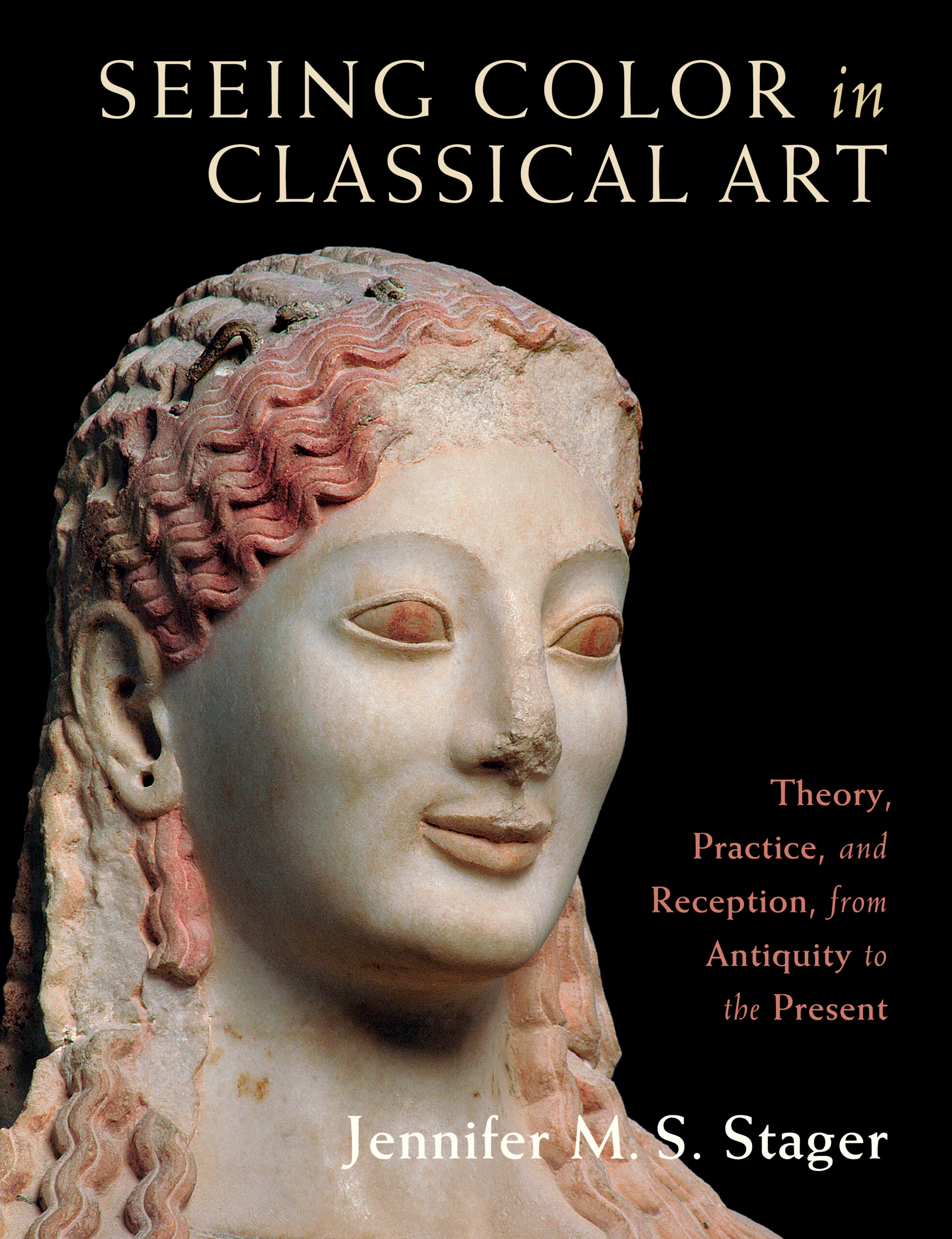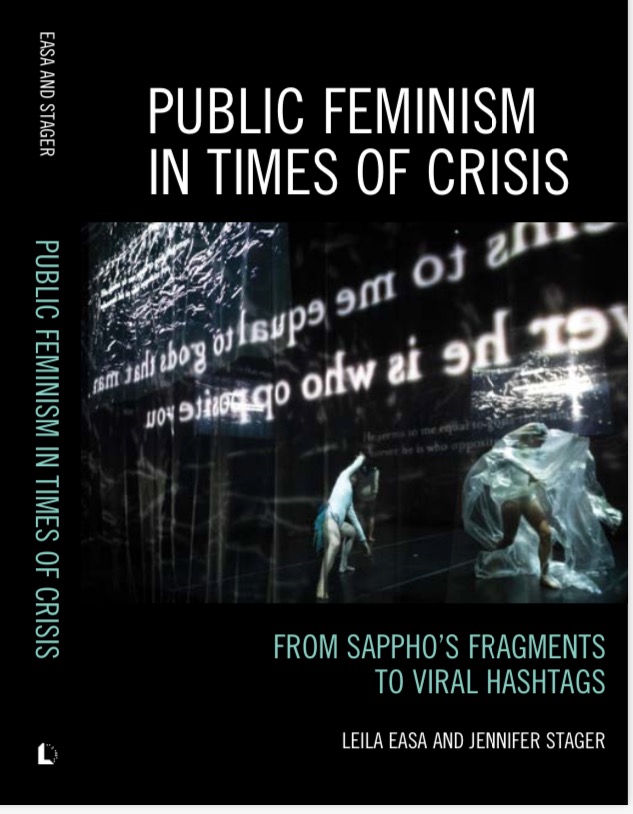
Seeing Color in Classical Art: Theory, Practice, Reception from Antiquity to the Present (CUP 2022)
An excerpt from the Introduction.
Reviews: Timothy Adelani in Journal of Classics Teaching; Seth Estrin in West 86th; Bente Kiilerich in The Classical Review.
I spoke to Professor Nandini Pandey about Seeing Color for CUP’s 1584.
Peopling the Past featured this work in the episode “Living in a Material World: Jennifer Stager and Technicolor Statues”
Related essays include:
"The Unbearable Whiteness of Whiteness" Art Practical (2018)
"The Materiality of Color in Ancient Mediterranean Art" in Essays in Global Color History: Interpreting the Ancient Spectrum ed. R. Goldman (Gorgias Press, 2016)
***

Public Feminism in Times of Crisis: From Sappho’s Fragments to Viral Hashtags (Lexington Books, 2022)
Public Feminism in Times of Crisis is a book of essays in classical receptions and feminist criticism developed in connection to ongoing political and epidemiological crises and the significant intersectional feminist response to this moment. This book examines the public practice of feminism in the age of social media and analyzes the deep histories threaded through this new(er) enactment. Six chapters analyze the Venus tradition and the archive; feminist biography and #MeToo as map; feminist translation; the collective lyric I and citational justice; virality and new materialism; and decentralized monuments and memorializing. The book’s methodology weaves together traditional academic research and public-facing media, practicing the very tools that it analyzes.
Reviews: Garcia-Ventura in BMCR; L. Mcmillan in Choice.
We are grateful to our editor Judith Lakämper at Lexington Books for permission to release this excerpt from our introduction open access:
Introduction (open access excerpts)
“In academia we often speak approvingly of the advantages of interdisciplinarity and the benefits of collaborative projects. Only rarely, however, do scholars and researchers put their money where their mouth is. For this reason Public Feminism in Times of Crisis is a rara avis, in the most positive sense of the term; it is a collaborative work written by two authors, without any noticeable differences in style or approach. What is more, the case studies cover a surprisingly wide chronology starting 30,000 years ago with the Venus of Willendorf (pp. 29-36), and reaching our days with an analysis of the #MeToo Movement and its aftermath (pp. 77-80).” -Agnès Garcia-Ventura, BMCR
An essay from this book exploring historical and contemporary list-monuments as feminist practice, “Overwriting the Monument Tradition: Lists, loss, and scale” appears in RES: Antropology and Aesthetics 75/76 (Fall 2021).